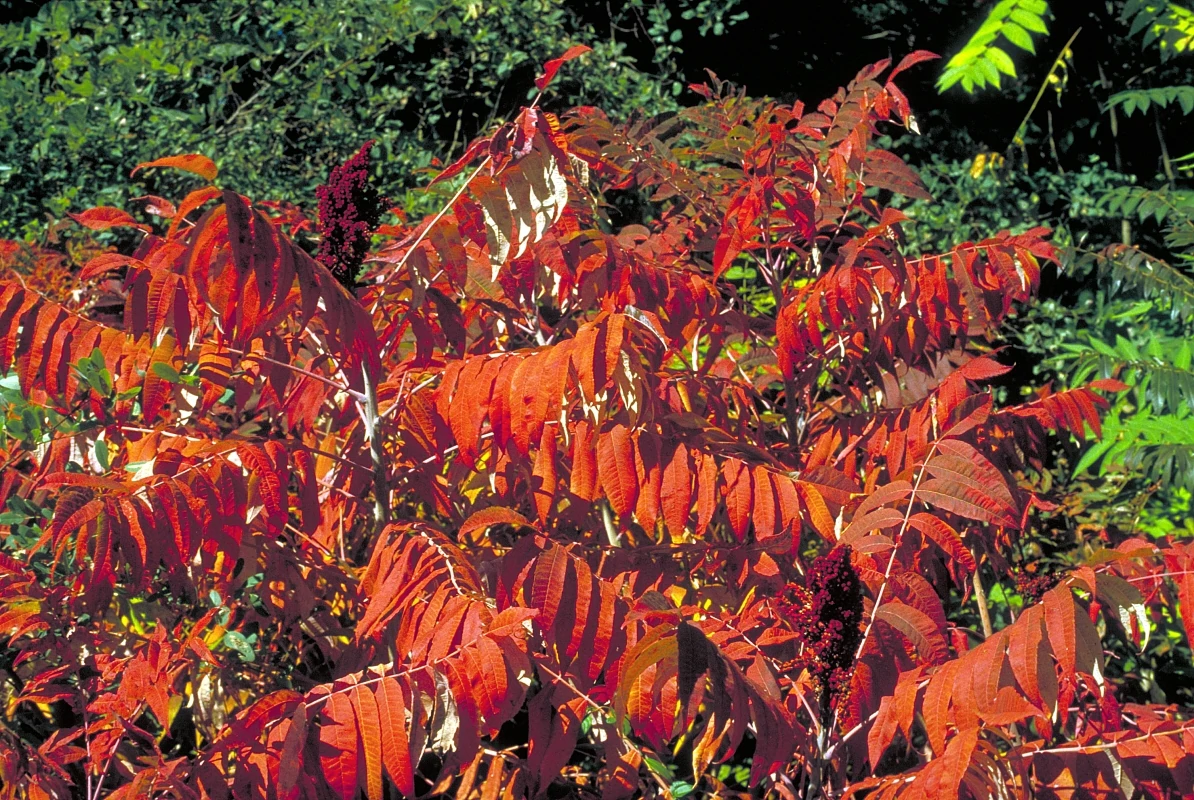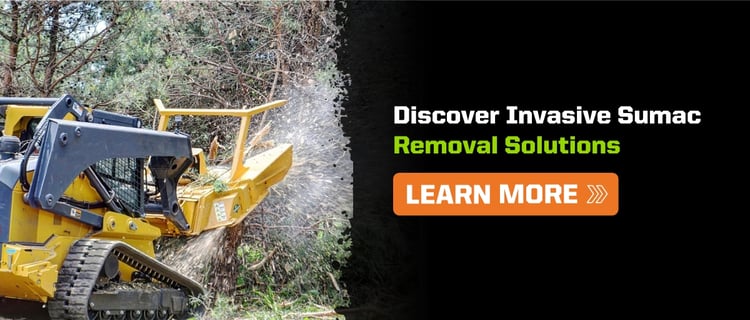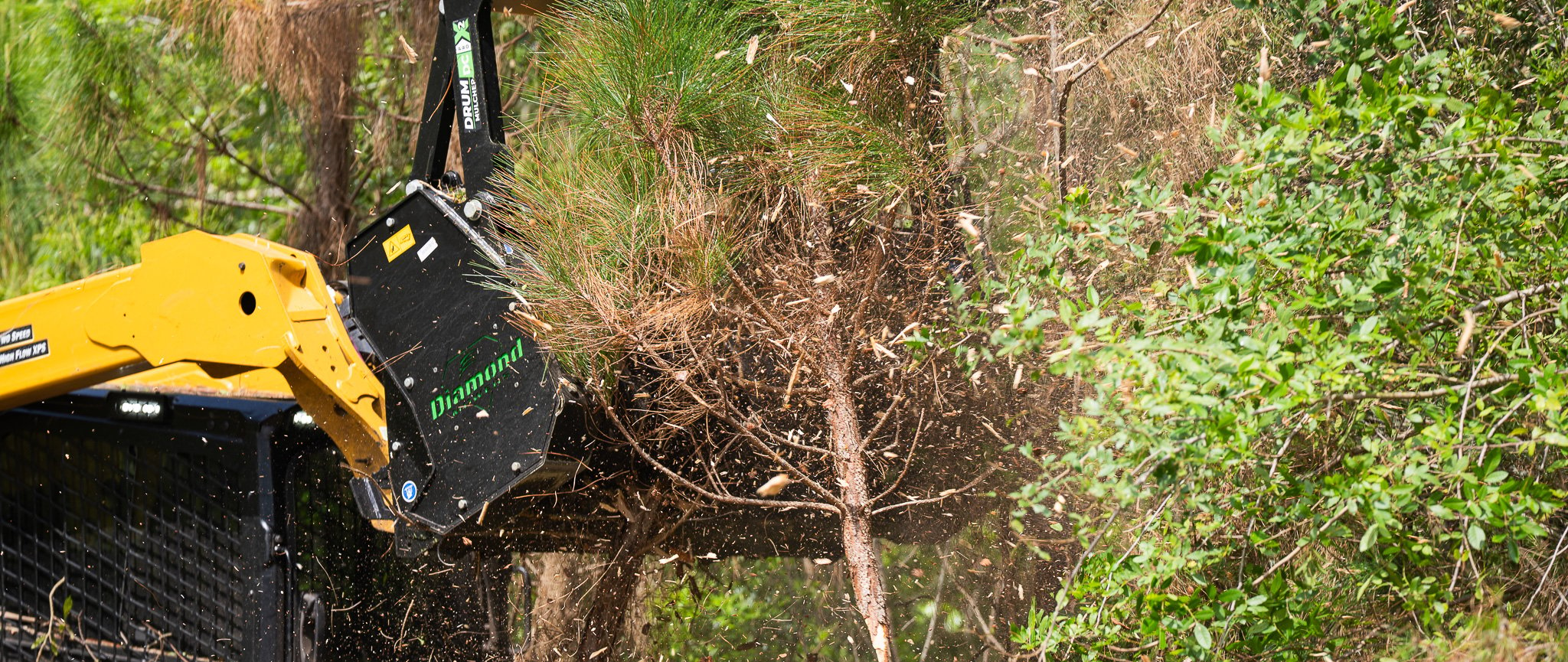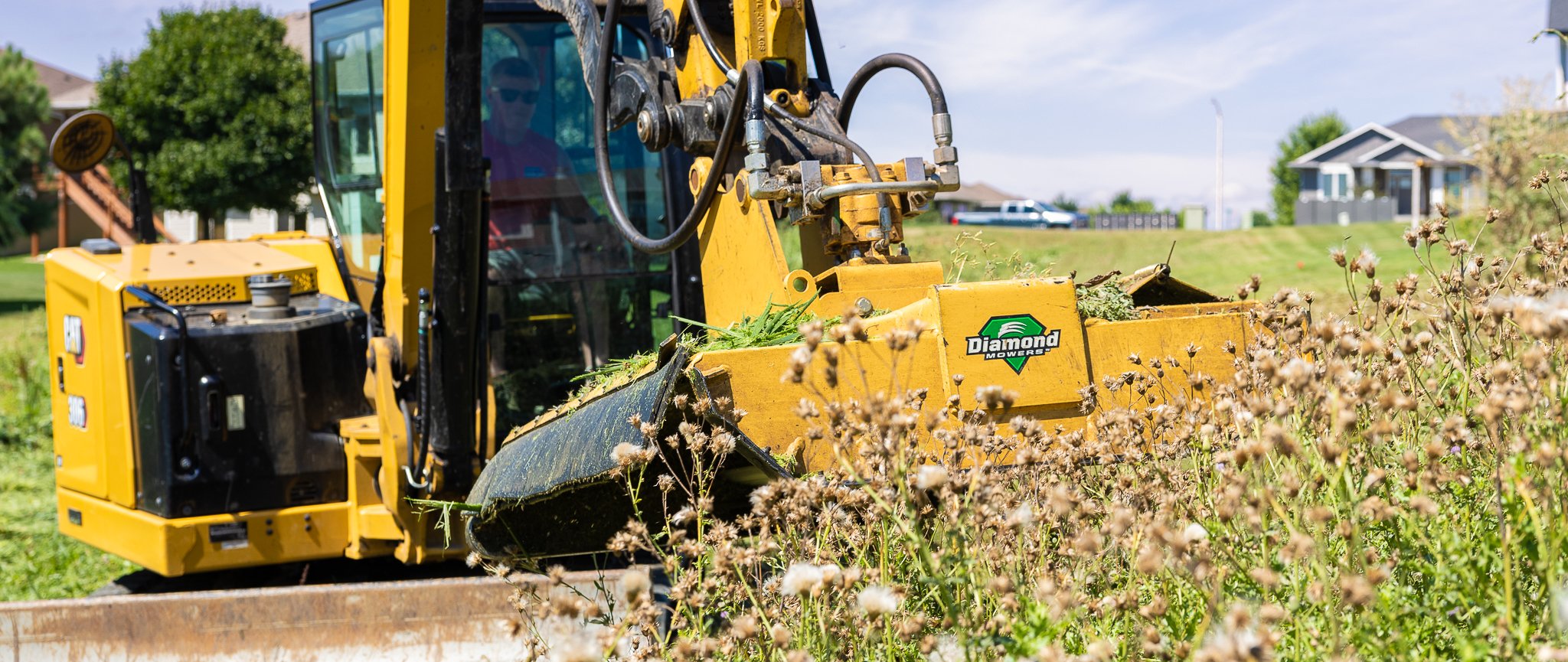Invasive Sumac & How to Get Rid of It
Oct 09, 2020 . 3 min read
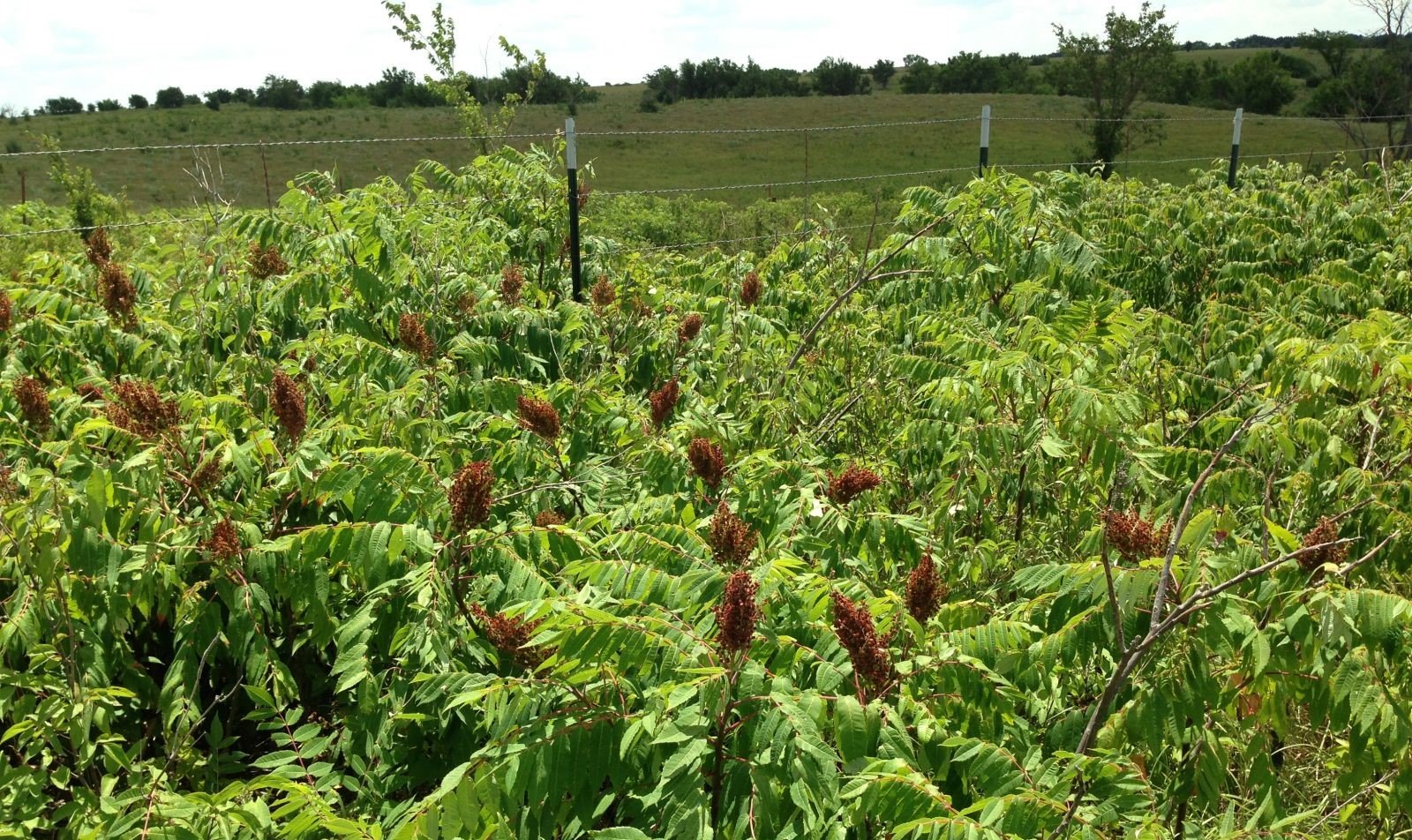
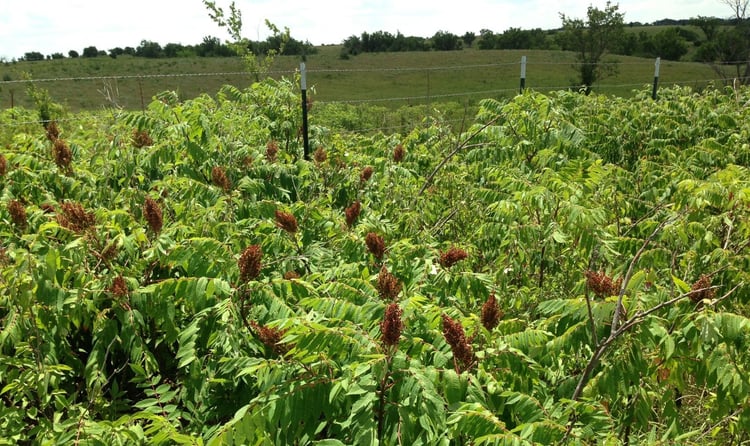
Sumac refers to approximately 35 species in the genus Rhus, a member of the Anacardiaceae flowering plant family. Sumac grows in various parts of the world, including temperate climates in Eastern North America.
Invasive sumac can thrive in various soil types and has low moisture requirements. Since it spreads both by seed and new shoots, sumac can easily spread and often grow quickly. Stringent control and eradication measures are often necessary to minimize the spread of invasive sumac and prevent significant environmental damage.
How to Identify Invasive Sumac
Invasive sumac comes in a variety of different species — however, you can generally identify sumac based on the following traits:
- Red foliage: Both smooth and staghorn sumac — the two most common variations — are easily identifiable by their bright red foliage. In the fall, sumac will also produce a cluster of deep red fruit.
- Height: Most types of sumac grow into a tree or shrub ranging between 5 and 20 feet in height. Larger sumac trees will often grow long and slender branches that tilt downward.
- Double rows of leaves: Poison sumac plants generally feature stems with two parallel rows of leaves. The red or red-brown stems usually hold between 6 and 12 leaves, plus a single leaf at the end.
Photo Credit: https://www.siteone.com/en/71859b-rhus-typhina-staghorn-sumac/p/574723
Common Sumac Species in the US
Sumac can either be a dioecious shrub or a small tree. Ten of the most common sumac species across the United States include:
- Smooth: One of the most common native sumac plants is the Smooth sumac. Found across the northeastern U.S., smooth sumac features shiny green pinnate leaves that turn orange or red in the fall.
- Staghorn: The largest of North American sumac is the staghorn sumac, which can grow up to 25 feet tall, often in the form of an open shrub or a small tree.
- Evergreen: Often used to create a hedge, the fast-growing evergreen sumac is most commonly found in the southwest U.S.
- Fragrant: Dense and sweet-scented, fragrant sumac grows low to the ground and often forms thickets. Fragrant sumac is common across Eastern North America.
- Lemonade berry: This sumac is identifiable from other sumac by its simple leaves. It also has a high fire resistance and is used as a hillside stabilizer in wildfire-prone areas across southern California.
- Littleleaf: It is a multi-branched shrub that reaches up to 15 feet tall — is known for its small pinnate leaves and white flower blooms.
- Prairie: As a medium to large shrub, prairie sumac is found across North America. Prairie sumac is sometimes planted because of its attractive autumnal colors.
- Skunkbush: Also known as stink bush and scented sumac — emits a strong smell when crushed. Ranging from 2 to 12 feet tall, skunkbush is sometimes planted for windbreak or erosion control.
- Sugar: Native to California and Arizona, it features large green leaves with white flower clusters.
Land Damage Caused by Invasive Sumac
Invasive sumac causes damage to the surrounding environment by growing quickly and aggressively, threatening local ecosystems and putting a strain on native plants and animals. Examples of environmental damage caused by sumac include:
Destroyed Vegetation
If gone unchecked, sumac can quickly outgrow its area and overtake and displace other vegetation. While the roots are relatively shallow and may only reach about 10 inches underground, many sumac species tend to spread rapidly. Sumac aggressively reproduces through seeds and grows in dense thickets, cutting off other plants' access to vital nutrients.
Damaging Shade
Another cause of sumac damage is the shade produced by an extensive patch of trees or shrubs. Sumac growth can block rain and sunlight and begin to change the ecosystem's soil chemistry, temperature, and light levels. This can cause existing plants and small shrubs in the area to wither. By blocking the sunlight, sumac trees may also prevent new plants and vegetation from growing.
Displaced Wildlife
Many species of sumac naturally attract wildlife due to edible berries, sweet scents, and attractive foliage. When sumac grows rampant and begins to destroy vegetation and land, it can disrupt the surrounding wildlife's natural ecosystem. Without the vegetation they depend on for survival, animals native to the region may have to look elsewhere for food. Sumac can also replace an animal's natural habitat, forcing them to find other areas to live.
How to Stop Sumac Trees From Spreading
If you’ve spotted the telltale signs of invasive sumac, it’s important to act quickly. There are three primary methods for getting rid of invasive sumac:
- Chemical Control: Since sumac tends to produce colonies of shoots from small sections of roots, it can be difficult to remove via cutting or other mechanical methods alone. Applying a chemical or herbicide can help eliminate invasive sumac.
- Fire: Burning is another method for getting rid of sumac. Fire will kill the buds along the stem and the growing shoots that are above ground. However, it won't reach the underground buds, creating a temporary solution for preventing sumac damage.
- Mechanical Control: Mechanical sumac tree removal is a highly efficient method for managing overgrowth, no matter how it’s growing. Eradicating sumac through mechanical means requires chopping or mulching trees down as close to ground level as possible, removing saplings by hand, and mowing any root sprouts that break the surface. Mulching, using a disc or drum mulcher, is a quick and effective method for taking on sumac. Once the trees are mulched, you can then use a stump grinder to remove the remaining stump.
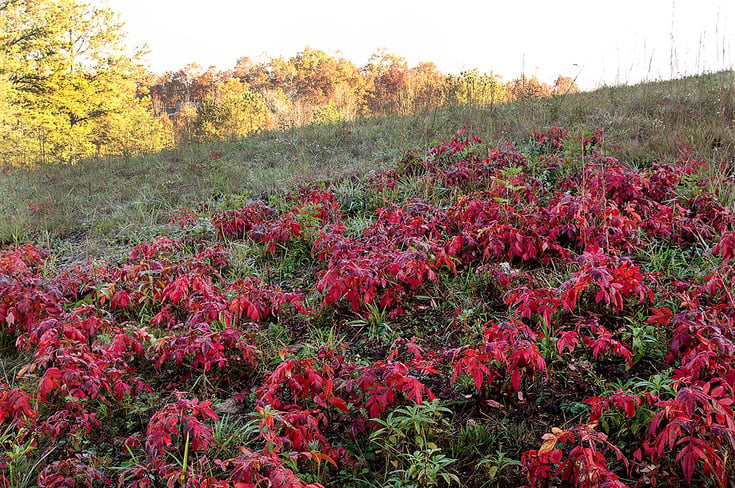 Photo Credit: http://www.bobthompson.me/2018/01/november-2017-including-vacation-in.htmlhttps://e360.yale.edu/features/small-pests-big-problems-the-global-spread-of-bark-beetles
Photo Credit: http://www.bobthompson.me/2018/01/november-2017-including-vacation-in.htmlhttps://e360.yale.edu/features/small-pests-big-problems-the-global-spread-of-bark-beetles
Discover Invasive Sumac Removal Solutions at Diamond Mowers
Diamond Mowers offers a wide variety of attachments to efficiently manage sumac overgrowth. These attachments are compatible with compact heavy equipment like skid-steers.
Contact us to learn about our product offerings and receive more helpful tips for stopping invasive sumac.

